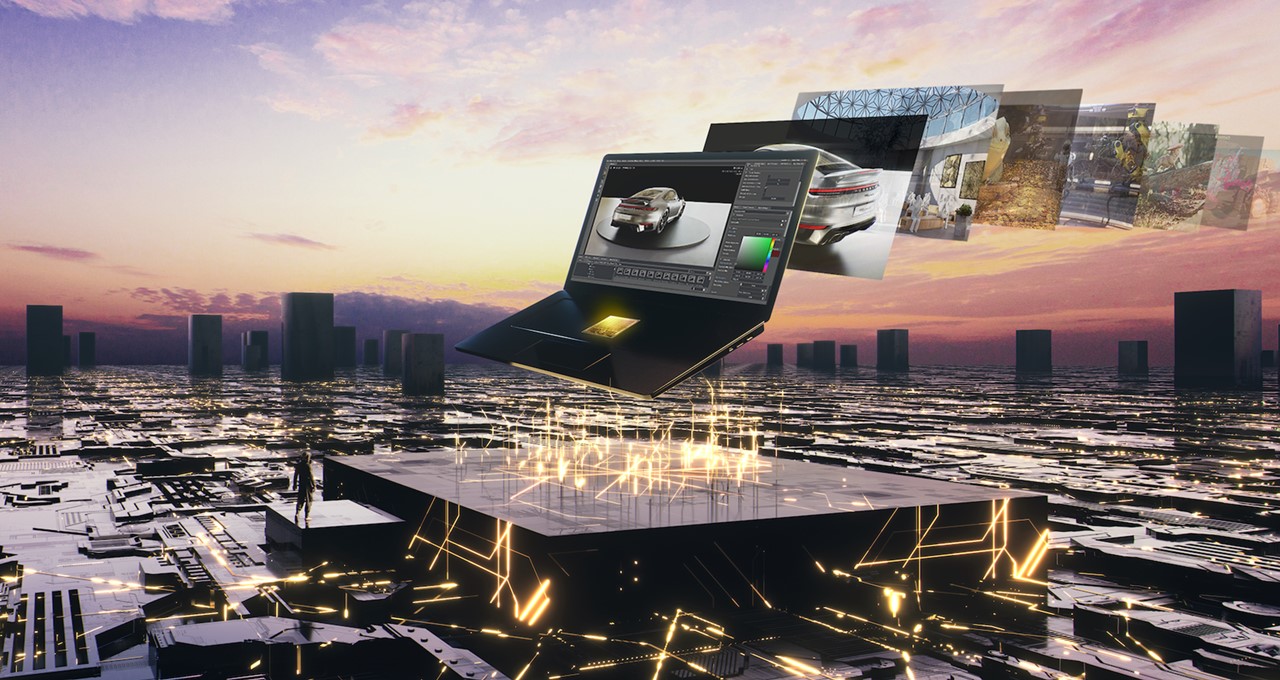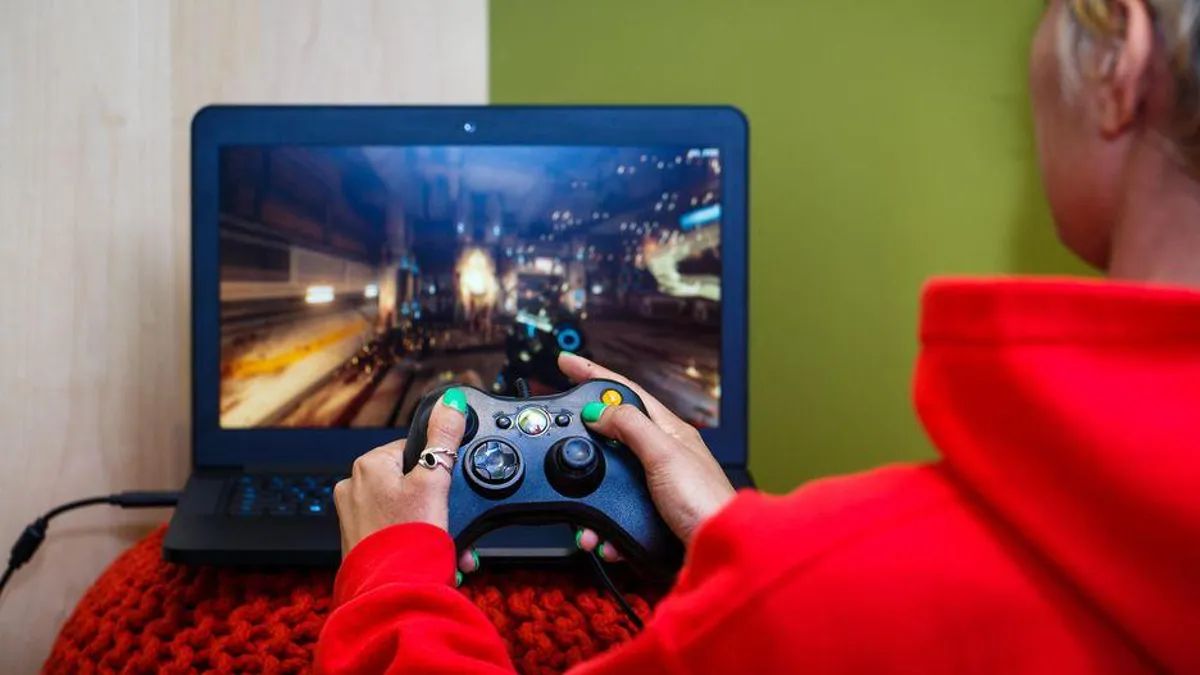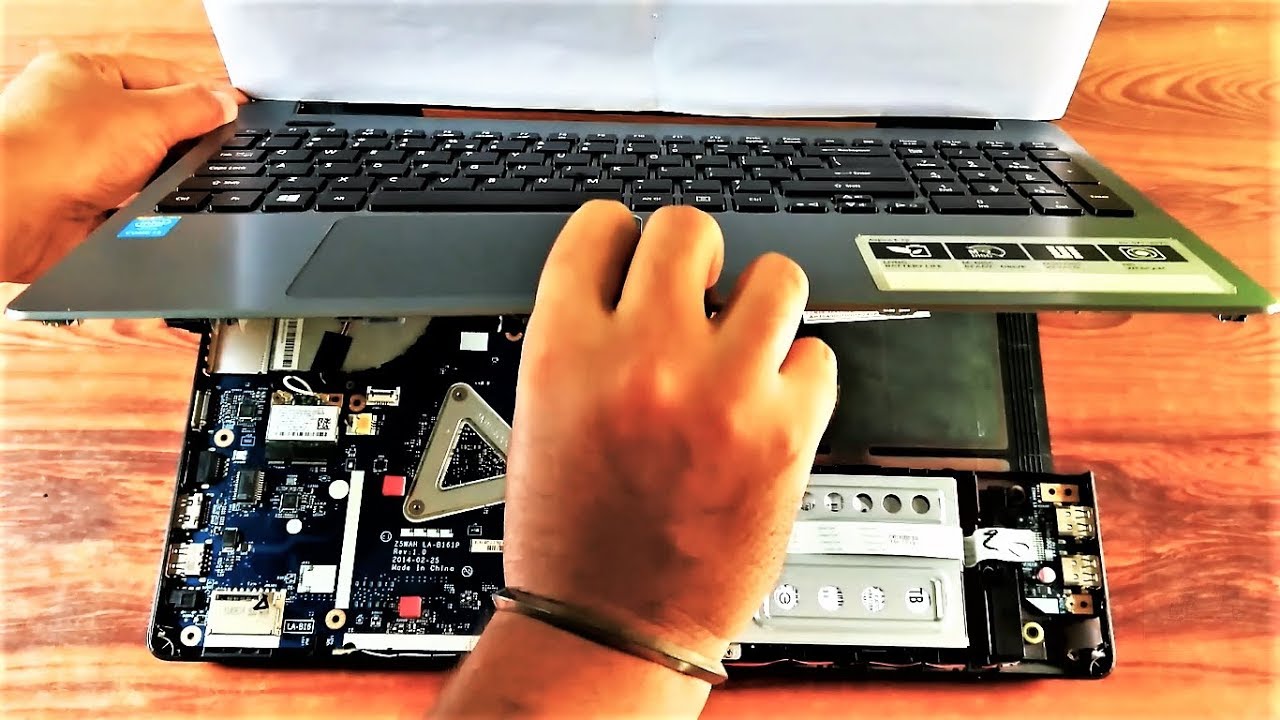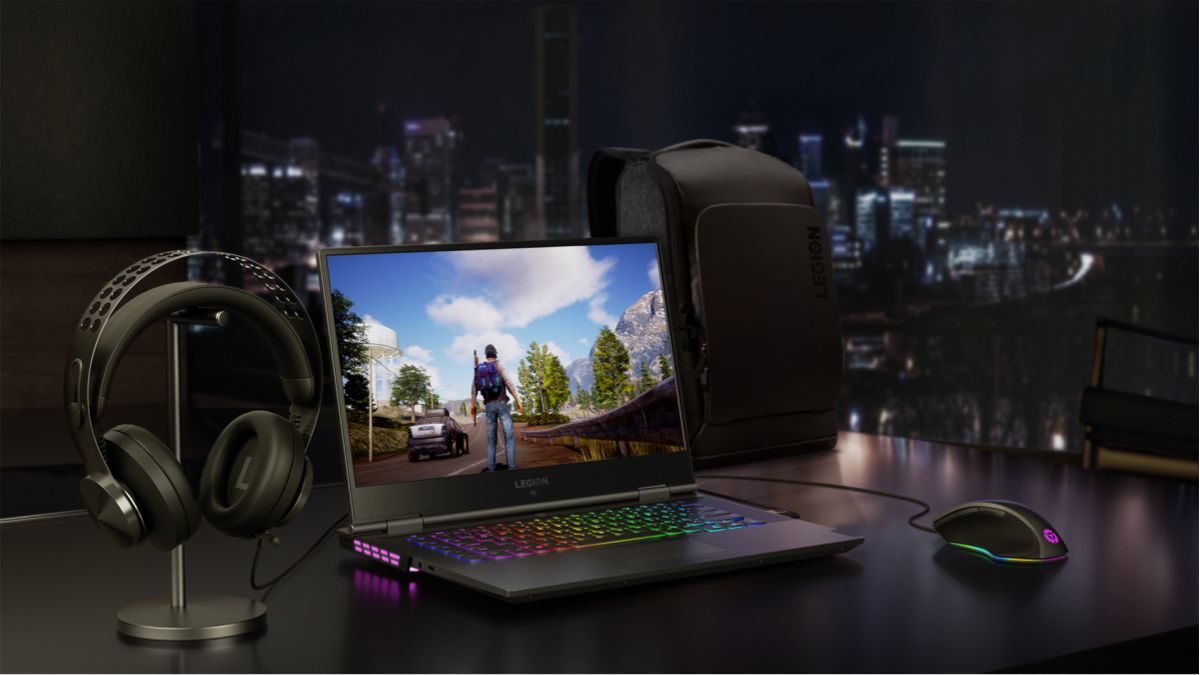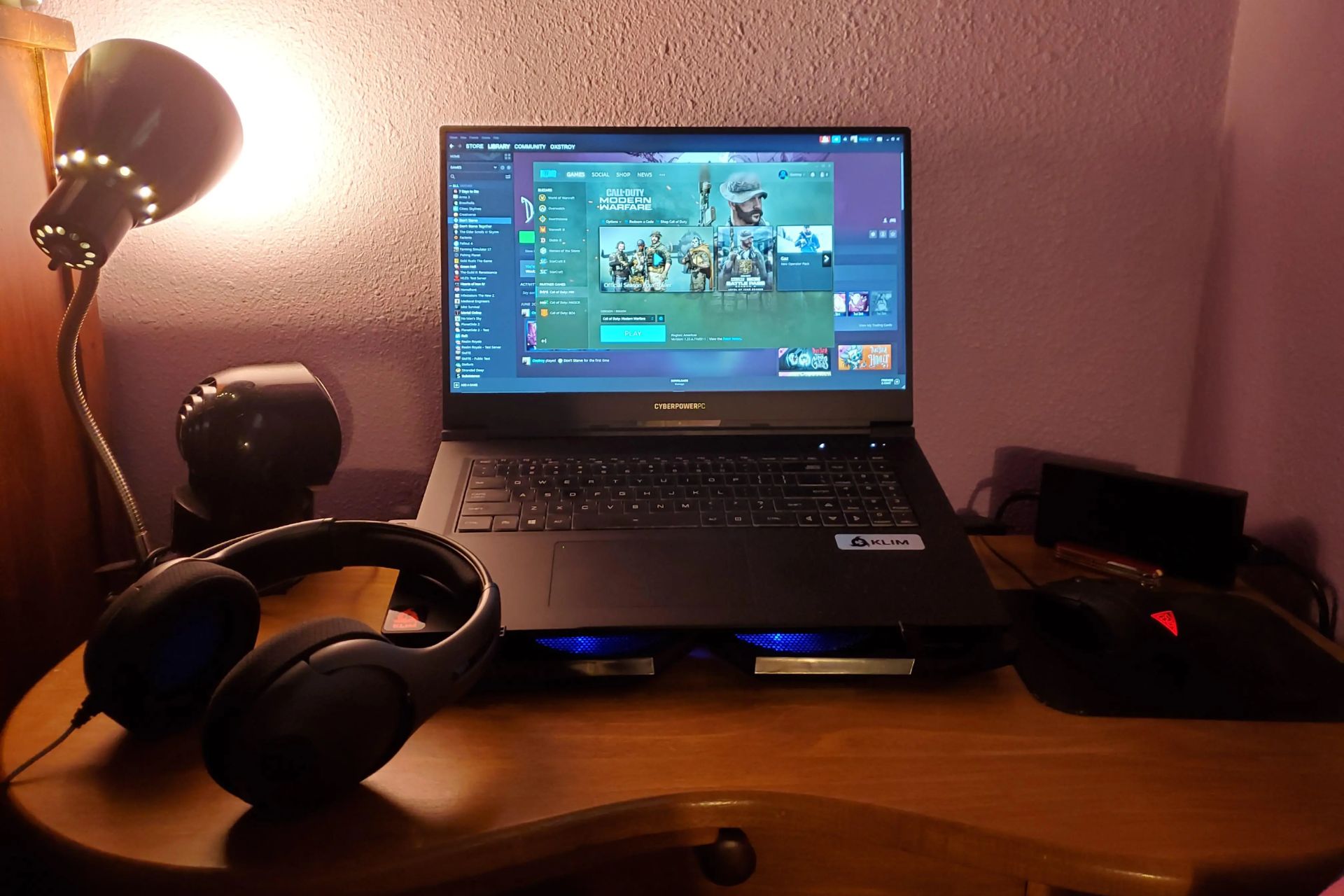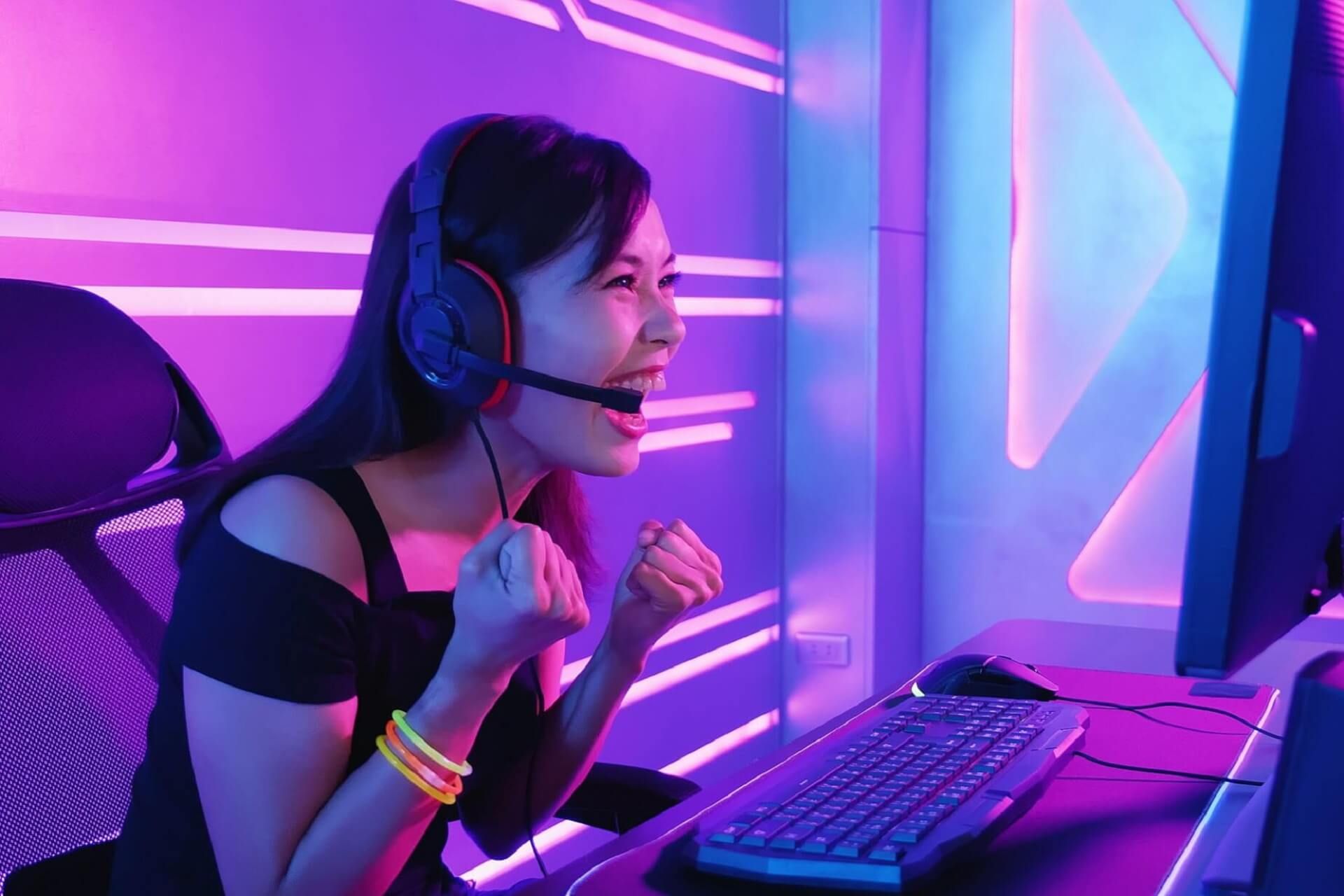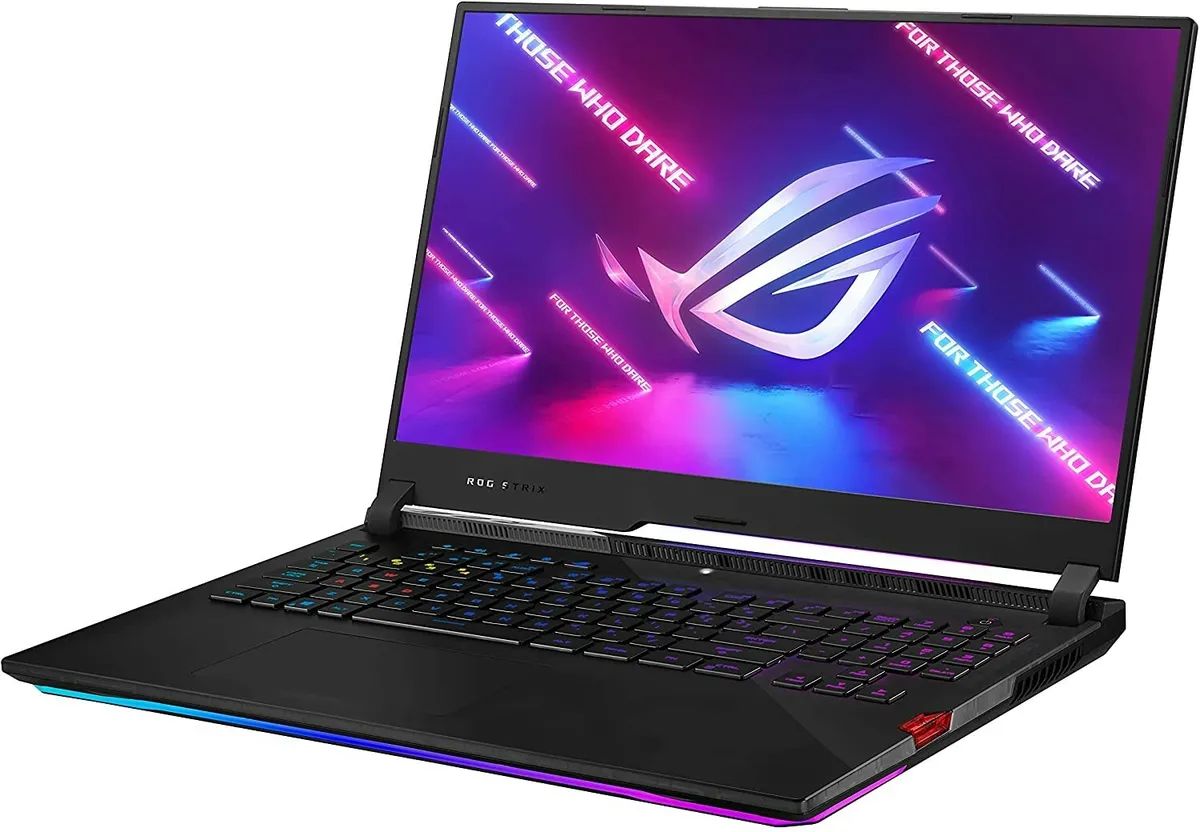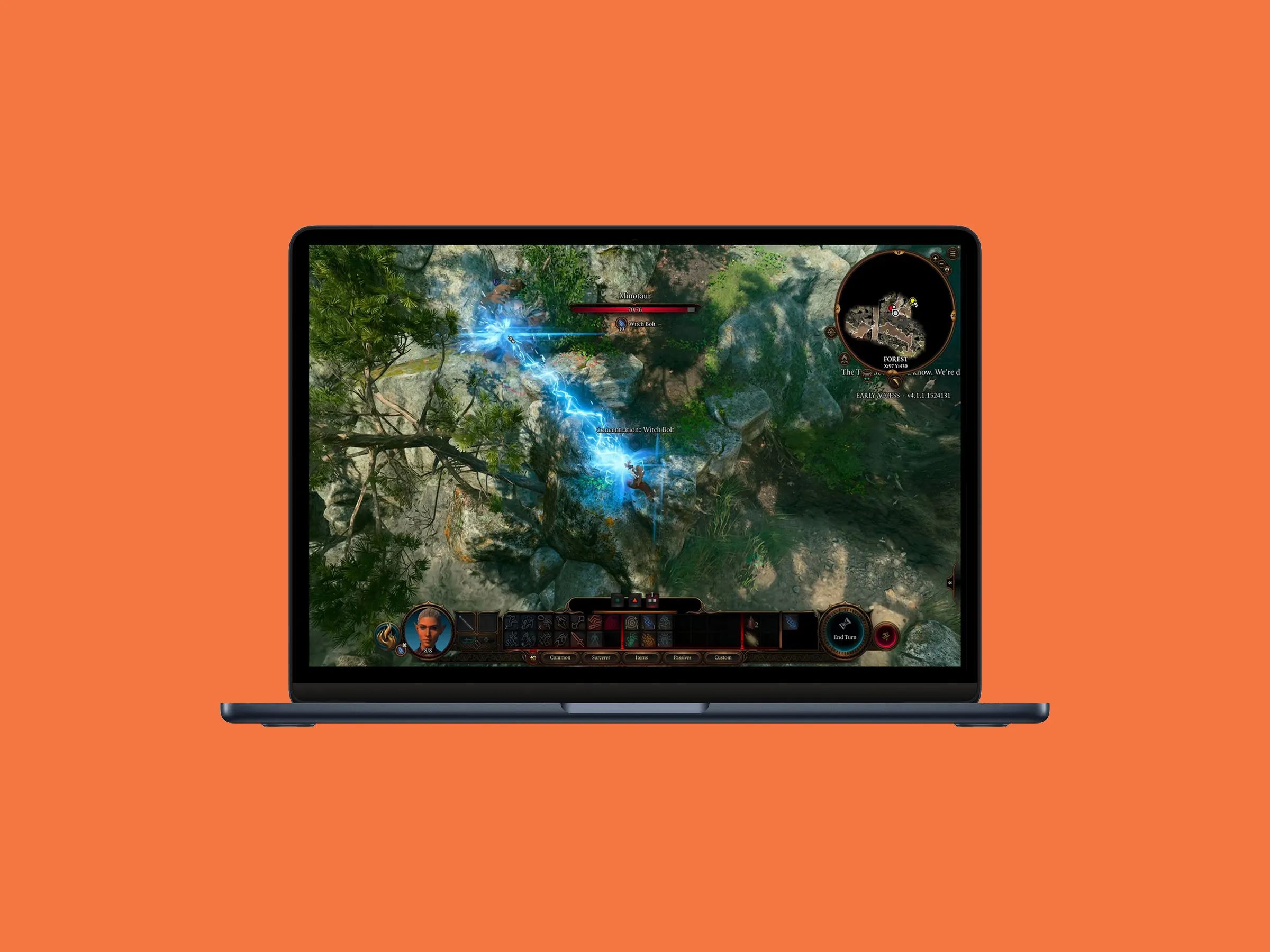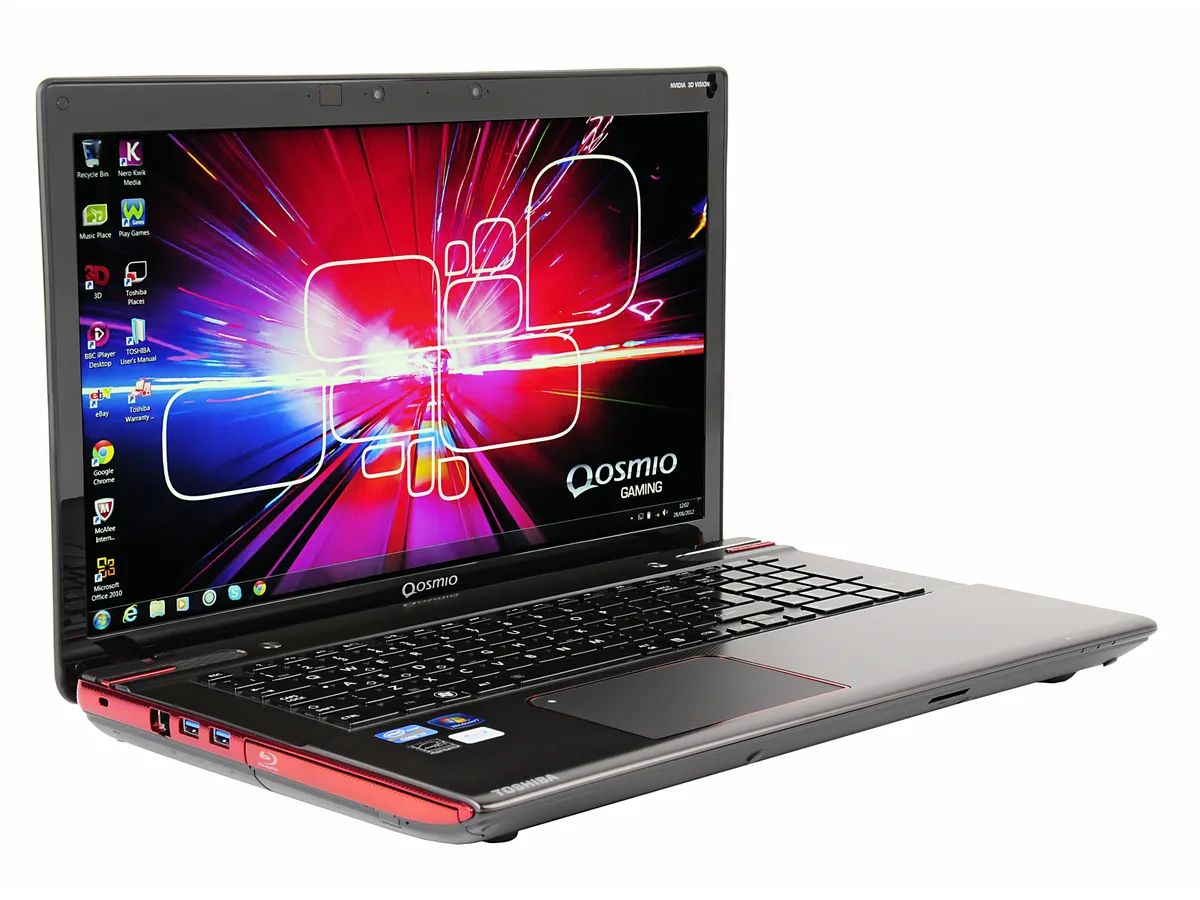Introduction
Welcome to the world of GPU overclocking! If you’re a laptop gamer or a content creator looking to squeeze every bit of performance out of your graphics card, then you’ve come to the right place. GPU overclocking is the process of increasing the clock speed of your GPU beyond its factory settings to achieve better performance and improved gaming experiences.
Overclocking your GPU laptop is a popular technique among enthusiasts, as it allows them to push their hardware to its limits and unlock its full potential. By increasing the clock speed, you can enjoy smoother gameplay, faster rendering times, and improved productivity.
Before diving into the exciting world of GPU overclocking, it’s essential to understand what it entails and the benefits it can bring. This article will guide you through the process of overclocking your GPU laptop, from the basics to advanced techniques. You’ll also learn about the precautions to take and the risks involved.
Whether you’re a seasoned overclocker or a newbie exploring this realm for the first time, this guide will equip you with the knowledge and tools needed to make informed decisions about overclocking your GPU laptop.
So, let’s embark on this journey together and unleash the full potential of your GPU laptop!
What is GPU Overclocking?
GPU overclocking is the process of increasing the clock speed of your graphics processing unit (GPU) beyond its manufacturer’s specifications. The clock speed determines how fast the GPU can perform calculations, which directly affects its performance in gaming, 3D rendering, and other graphically intensive tasks.
By overclocking your GPU, you essentially “push” it to operate at a higher clock speed than it was originally designed for. This results in increased computational power and potential performance gains. However, it’s important to note that not all GPUs are created equal, and the extent to which you can overclock your GPU laptop may vary depending on the specific model, cooling system, and other factors.
Overclocking your GPU can bring several benefits. Firstly, it allows you to extract more performance from your existing hardware without the need for an expensive upgrade. This means you can get a performance boost without spending extra money on a new graphics card.
Secondly, overclocking can lead to improved frame rates and smoother gameplay in video games. By increasing the clock speed of your GPU, you can achieve higher frame rates, reduce input lag, and enjoy a more responsive gaming experience overall.
In addition to gaming, GPU overclocking can also benefit other tasks that heavily rely on graphics processing power. If you’re a content creator working with video editing, 3D modeling, or rendering software, overclocking your GPU can significantly reduce rendering times and improve overall productivity.
However, it’s important to note that overclocking is not without its risks. Pushing your GPU beyond its recommended specifications can cause higher power consumption, increased heat generation, and potentially reduce the lifespan of your hardware if not done correctly or without proper cooling.
Now that you understand what GPU overclocking is and the potential benefits it can bring, it’s crucial to consider certain factors before attempting to overclock your GPU laptop. We’ll explore these considerations in the next section.
Advantages of Overclocking a GPU
Overclocking your GPU laptop can offer several advantages, enhancing both gaming and non-gaming experiences. Here are some of the key benefits of overclocking:
- Improved Performance: By increasing the clock speed of your GPU, you can achieve higher frame rates and smoother gameplay in video games. This translates to a more immersive and enjoyable gaming experience, with reduced stuttering and lag.
- Faster Rendering Times: If you’re a content creator using software that relies heavily on GPU processing, such as video editing or 3D rendering applications, overclocking your GPU can significantly reduce render times. This allows you to complete projects more efficiently and meet tight deadlines.
- Higher Productivity: Overclocking your GPU can also benefit non-gaming tasks. Whether you’re working with graphic design software or running complex simulations, an overclocked GPU can handle calculations faster, boosting your overall productivity.
- Cost-effective Performance Boost: Overclocking provides a cost-effective way to extract more performance from your existing GPU without having to purchase a new one. Instead of investing money in a higher-end graphics card, overclocking allows you to maximize the potential of your current hardware.
- Customizability and Control: Overclocking your GPU allows you to have greater control and customization options. You can fine-tune various settings, such as core clock speed, memory clock speed, and voltage, to optimize performance based on your specific needs and preferences.
- Learning and Exploration: Overclocking can be an exciting learning experience, especially for enthusiasts who enjoy tinkering with hardware and exploring the limits of their components. It offers an opportunity to understand how GPUs function and experiment with different configurations.
While overclocking offers these advantages, it’s crucial to take certain precautions and considerations before attempting to overclock your GPU laptop. Understanding these factors will help ensure a safe and successful overclocking process, which we will explore in the next section.
Things to Consider Before Overclocking Your GPU Laptop
Before you dive into overclocking your GPU laptop, there are a few important factors to consider. These considerations will help you make informed decisions and ensure that your overclocking journey is safe and successful. Here are some things to keep in mind:
- Thermal Constraints: Overclocking your GPU generates additional heat, which can be detrimental to your laptop’s overall performance and longevity. Ensure that your laptop has adequate cooling mechanisms in place, such as proper ventilation, heat sinks, and fans. Consider investing in a laptop cooling pad to help dissipate heat more effectively.
- Manufacturer and Warranty: Overclocking your GPU may void your laptop’s warranty, as it involves pushing the hardware beyond its intended specifications. Before proceeding, check your laptop manufacturer’s policies regarding overclocking and warranty coverage to avoid any potential issues.
- Power Requirements: Overclocking increases the power consumption of your GPU. Ensure that your laptop’s power supply can handle the additional load. If you’re experiencing sudden shutdowns or stability issues during overclocking, it might be an indicator that your laptop is not receiving enough power, and you may need to adjust your overclocking settings accordingly.
- Stability Testing: After overclocking, it’s crucial to test the stability of your GPU. Run stress tests and benchmarks to ensure that your overclocked settings are stable and do not cause crashes or system instability. There are various software tools available, such as FurMark and Heaven Benchmark, that can help you carry out these tests.
- Data Backup: Before you begin the overclocking process, make sure to back up your important data. While the risks are minimal, there is always a slight chance of data loss or system instability during overclocking. Having a backup will give you peace of mind and protect your valuable files.
- Gradual Overclocking Approach: It’s best to take a gradual approach when overclocking your GPU laptop. Start by making small adjustments to the clock speeds and test the stability after each adjustment. This allows you to find the optimal balance between performance and stability without pushing your hardware too far.
- Monitoring Software: To keep an eye on your GPU’s temperature, clock speed, and other vital statistics, use monitoring software. This will help you identify any potential issues or monitor the effects of your overclocking settings in real-time. Popular monitoring software options include MSI Afterburner, GPU-Z, and HWMonitor.
By considering these factors, you can ensure a smoother and safer overclocking process for your GPU laptop. In the next section, we will guide you through the step-by-step process of overclocking your GPU laptop.
Step-by-Step Guide on How to Overclock Your GPU Laptop
Overclocking your GPU laptop may seem daunting at first, but with the right approach and guidance, you can achieve it successfully. Follow this step-by-step guide to overclock your GPU laptop:
- Research and Preparation: Familiarize yourself with your GPU model, laptop specifications, and software tools used for overclocking. Ensure that you have the latest drivers installed for your GPU.
- Choose an Overclocking Tool: Select a reliable and user-friendly overclocking tool that is compatible with your GPU. Popular options include MSI Afterburner, EVGA Precision X1, or AMD Wattman (for AMD GPUs).
- Start with Stock Settings: Open your chosen overclocking tool and make note of your GPU’s default clock speeds (core clock and memory clock). It is essential to understand the baseline performance before proceeding with overclocking.
- Adjust the Core Clock speed: Increase the core clock speed by a small increment (e.g., +50 MHz) and click apply. Test the stability of your laptop by running a stress test or benchmark, such as FurMark or Heaven Benchmark, for at least 15-30 minutes. If the system remains stable, repeat the process, increasing the core clock in small increments until it becomes unstable.
- Adjust the Memory Clock speed: After finding a stable core clock speed, move on to adjusting the memory clock speed. Follow a similar process of increasing it by small increments and testing for stability. Note that increasing the memory clock speed may have less impact on performance compared to the core clock.
- Monitor Temperature and Voltage: Throughout the overclocking process, keep an eye on the temperature of your GPU. If the temperature becomes too high or exceeds safe limits (usually above 85°C), consider adjusting your overclocking settings or improving your laptop’s cooling. Additionally, monitor the voltage levels and ensure they remain within safe ranges.
- Test Real-World Applications: After achieving a stable overclock, test your GPU in real-world applications, such as your favorite games or GPU-intensive software, to ensure the overclock provides the desired performance boost and remains stable in different scenarios.
- Save Profiles: Once you are satisfied with your overclocked settings, save them as profiles within your overclocking tool. This allows you to switch between your stock settings and overclocked settings easily.
Remember, it’s crucial to take a gradual and cautious approach when overclocking your GPU laptop. Pushing your hardware too far or applying sudden and large adjustments can lead to instability and potential damage. Always monitor temperature, voltage, and stability throughout the process.
In the next section, we will explore how to monitor and stress test your overclocked GPU laptop to ensure its stability and performance.
Monitoring and Stress Testing Your Overclocked GPU Laptop
Once you have successfully overclocked your GPU laptop, it’s essential to monitor its performance and conduct stress tests to ensure stability. This section will guide you through the process of monitoring and stress testing your overclocked GPU laptop:
- Monitoring Software: Use a monitoring software tool such as MSI Afterburner, GPU-Z, or HWMonitor to keep track of your GPU’s temperature, clock speeds, and fan speeds. These tools provide real-time information about the performance of your GPU while running demanding applications.
- Temperature Monitoring: Pay close attention to the temperature of your GPU during normal usage and intensive tasks. Ensure that the temperature does not exceed safe limits (usually around 85°C). If your GPU temperatures are consistently high, consider adjusting your overclocking settings or improving the cooling of your laptop.
- Fan Speed Adjustment: If you notice that your GPU temperatures are getting too high, one option is to increase the fan speed manually. Most overclocking tools allow you to adjust the fan speed curve to provide more aggressive cooling. However, keep in mind that this may result in increased noise levels.
- Stress Testing: Stress testing your overclocked GPU laptop is crucial to ensure stability and identify any potential issues. Use tools like FurMark or Heaven Benchmark to stress test your GPU by running intense graphical tests for an extended period (e.g., 30 minutes to an hour). Monitor temperatures, clock speeds, and overall system stability during the stress tests.
- Observe Stability: During stress testing, keep an eye out for any crashes, artifacts, or system instability. If you encounter any issues, it may indicate that your overclocked settings are not stable. In such cases, you’ll need to adjust your overclocking parameters (e.g., lower core or memory clock speeds) to find a stable configuration.
- Long-Term Stability: Conducting shorter stress tests is a good starting point, but it’s also essential to ensure the long-term stability of your overclocked GPU laptop. Use your computer as you normally would for an extended period, running various applications and games to validate the stability of your overclocking settings over time.
Monitoring your GPU’s performance and conducting regular stress tests will help you maintain a stable overclock while also safeguarding against potential issues. Keep in mind that every GPU and laptop configuration can behave differently, so finding the optimal stability and performance balance may require some trial and error.
In the next section, we will explore some common issues you may encounter during the overclocking process and provide troubleshooting tips to overcome them.
Troubleshooting Common Issues
While overclocking your GPU laptop can bring performance benefits, you may encounter some common issues along the way. This section will address these issues and provide troubleshooting tips to help you overcome them:
- System Instability or Crashes: If your system becomes unstable or crashes after overclocking, it may indicate an unstable overclock. To resolve this, try lowering the core clock or memory clock speeds in small increments until stability is achieved. Additionally, ensure that your GPU is not overheating by improving cooling or lowering the overclocking settings.
- Artifacts or Visual Glitches: Artifacts or visual glitches, such as flickering textures or screen artifacts, can be a sign of an unstable overclock or insufficient voltage. To address this, reduce the core clock or memory clock speeds slightly or increase the voltage slightly within safe limits. However, be cautious when adjusting voltage, as too high or inconsistent voltage levels can cause damage to your GPU.
- High GPU Temperature: If your GPU temperatures are consistently high, it may indicate insufficient cooling or an overly aggressive overclock. Ensure that your laptop’s cooling systems, such as fans and heat sinks, are clean and functioning properly. You can also consider adjusting the fan speed curve to provide more aggressive cooling or lowering the overclocking settings to reduce heat generation.
- Increase in Power Consumption: Overclocking your GPU can lead to an increased power draw. If you experience sudden shut downs or stability issues during overclocking, it may indicate that your laptop’s power supply is unable to handle the increased load. Consider adjusting the overclocking settings or upgrading to a more powerful power supply if necessary.
- Driver Incompatibilities: Some overclocking tools may have compatibility issues with certain GPU drivers or software. If you encounter such issues, try updating your GPU drivers to the latest version or switch to a different overclocking tool that is known to be compatible with your GPU model.
- System Sluggishness or Performance Drop: If you notice a decrease in overall system performance or sluggishness after overclocking, it could indicate an unstable overclock or excessive heat. Reduce the core clock or memory clock speeds slightly and monitor the temperatures to ensure better stability and cooling.
It’s important to remember that every GPU and system configuration is unique, and troubleshooting overclocking issues may require some experimentation and adjustments. Take a systematic approach, make conservative changes, and monitor your system’s performance and stability throughout the process.
Now that we’ve addressed common issues and their troubleshooting tips, let’s take a moment to understand the necessary precautions and risks involved in overclocking your GPU laptop in the next section.
Precautions and Risks of Overclocking Your GPU Laptop
While GPU overclocking can provide performance benefits, it’s important to be aware of the precautions and risks associated with this practice. Here are some key considerations to keep in mind:
- Voiding Warranty: Overclocking your GPU laptop may void the manufacturer’s warranty, as it involves pushing the hardware beyond its intended specifications. Before proceeding, carefully review your laptop’s warranty terms and conditions to understand any potential ramifications.
- Increased Heat Generation: Overclocking causes your GPU to operate at higher clock speeds, which results in increased heat production. If your laptop’s cooling system is inadequate or becomes overwhelmed, it can lead to higher temperatures and potential damage to your GPU or other components. Ensure that your laptop has proper cooling mechanisms in place, such as clean fans, heat sinks, and good ventilation.
- Potential Hardware Damage: Pushing your GPU beyond its recommended limits increases the risk of hardware damage. It’s crucial to closely monitor temperatures, voltages, and stability during the overclocking process. Excessive voltages or unstable overclocks can cause permanent damage to your GPU or other system components.
- System Instability: Overclocking can introduce instability to your system if the overclocked settings are not stable. This may result in crashes, software instability, and data loss. It’s essential to thoroughly test and validate the stability of your overclocked GPU laptop using stress tests and real-world applications before relying on it for critical tasks.
- Higher Power Consumption: Overclocking your GPU generally increases power consumption, which can put additional strain on your laptop’s power supply. Ensure that your power supply is capable of handling the increased load, and monitor the stability of your system during heavy usage to prevent shutdowns or system instability.
- Data Loss: Although rare, there is a small risk of data loss during the overclocking process. It’s always recommended to back up your important files and documents before attempting any overclocking adjustments. This can help protect against any potential data loss due to system instability or unexpected issues.
By understanding and taking these precautions into consideration, you can minimize the risks and ensure a safer overclocking experience for your GPU laptop. It’s important to approach overclocking with caution, perform thorough testing, and make incremental adjustments to achieve stable and reliable performance.
In the next section, we will conclude our guide on overclocking your GPU laptop and summarize the key points covered throughout the article.
Conclusion
Congratulations! You have reached the end of our guide on overclocking your GPU laptop. We have explored the world of GPU overclocking, its advantages, and the precautions to keep in mind. With this knowledge, you can now confidently embark on overclocking your GPU laptop to maximize its performance.
Overclocking your GPU laptop offers several benefits, including improved gaming experiences, faster rendering times, higher productivity, and cost-effective performance boosts. By pushing your GPU beyond its factory settings, you can extract more performance from your hardware without the need for expensive upgrades.
Throughout the process, it’s essential to remember the precautions and risks involved in overclocking. Take into account factors such as thermal constraints, potential warranty voiding, increased power consumption, system instability, and the need for proper monitoring and stress testing.
By following a step-by-step guide, monitoring your GPU’s performance, and troubleshooting common issues, you can achieve a stable and successful overclock. However, always remember to approach overclocking with caution and make incremental adjustments to find the optimal performance and stability balance for your specific GPU laptop.
Lastly, always prioritize the safety and longevity of your hardware. Regularly monitor temperatures, ensure proper cooling, and be prepared to revert to stock settings or make adjustments as needed.
Now, armed with this knowledge, it’s time for you to unleash the full potential of your GPU laptop through overclocking. Have fun exploring the increased performance, smoother gameplay, and enhanced productivity that overclocking can provide!







